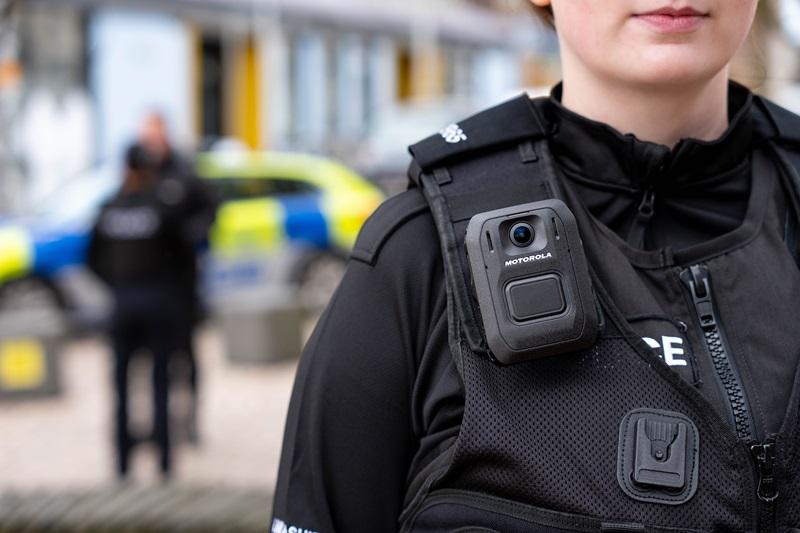-
News Feed
- EXPLORE
-
Pages
-
Marketplace
-
Jobs
-
2 Posts
-
2 Photos
-
0 Videos
-
Web Marketing Executive at Market Research Future
-
Lives in New York
-
From New York
-
Studied MCA at USA UniversityClass of A
-
Female
-
Followed by 0 people
Recent Updates
-
Body-Worn Cameras: Enhancing Transparency, Safety, and Accountability in Modern Security
Body-worn cameras have become essential tools in modern policing and security operations, fundamentally changing the way incidents are recorded and reviewed. These compact devices, typically clipped to a uniform or worn on the chest, provide real-time audio and video footage of encounters between law enforcement officers and the public. Their widespread adoption aims to enhance transparency, promote accountability, and protect both officers and civilians by capturing unbiased evidence of events as they unfold. In an era where public scrutiny of law enforcement practices is intensifying, body-worn cameras offer a tangible solution to build trust and ensure accurate documentation of interactions.
Source - https://www.marketresearchfuture.com/reports/body-worn-camera-market-2972
The rise in body-worn camera usage is largely driven by increasing demand for law enforcement transparency and a growing need to mitigate misconduct allegations. Footage captured by these cameras can serve as crucial evidence in legal proceedings, internal investigations, and public complaints. Not only do they provide a factual account of incidents, but they also encourage better behavior from both officers and citizens, knowing that their actions are being recorded. Furthermore, body cameras help reduce false accusations, thereby enhancing officer protection and reducing administrative burdens related to complaints.
The global body-worn camera market is experiencing robust growth, fueled by the integration of advanced technologies and expanded applications beyond law enforcement. Modern body cameras come equipped with features like high-definition video, infrared night vision, live streaming capabilities, and cloud-based data storage. These enhancements improve the quality and accessibility of recorded content, allowing for faster response times and more thorough post-event analysis. In addition to policing, sectors such as private security, emergency response, public transportation, and even retail are adopting wearable surveillance solutions to bolster situational awareness and safety.
Policy and legislation also play a pivotal role in the implementation of body-worn cameras. Jurisdictions around the world are establishing guidelines governing camera use, data retention, and privacy considerations. Proper policies help strike a balance between transparency and civil liberties, ensuring that sensitive footage is handled with care. These regulations typically address when cameras should be activated, who has access to the footage, and how long it must be retained. Standardized policies also enable consistent use across departments and support legal compliance.Body-Worn Cameras: Enhancing Transparency, Safety, and Accountability in Modern Security Body-worn cameras have become essential tools in modern policing and security operations, fundamentally changing the way incidents are recorded and reviewed. These compact devices, typically clipped to a uniform or worn on the chest, provide real-time audio and video footage of encounters between law enforcement officers and the public. Their widespread adoption aims to enhance transparency, promote accountability, and protect both officers and civilians by capturing unbiased evidence of events as they unfold. In an era where public scrutiny of law enforcement practices is intensifying, body-worn cameras offer a tangible solution to build trust and ensure accurate documentation of interactions. Source - https://www.marketresearchfuture.com/reports/body-worn-camera-market-2972 The rise in body-worn camera usage is largely driven by increasing demand for law enforcement transparency and a growing need to mitigate misconduct allegations. Footage captured by these cameras can serve as crucial evidence in legal proceedings, internal investigations, and public complaints. Not only do they provide a factual account of incidents, but they also encourage better behavior from both officers and citizens, knowing that their actions are being recorded. Furthermore, body cameras help reduce false accusations, thereby enhancing officer protection and reducing administrative burdens related to complaints. The global body-worn camera market is experiencing robust growth, fueled by the integration of advanced technologies and expanded applications beyond law enforcement. Modern body cameras come equipped with features like high-definition video, infrared night vision, live streaming capabilities, and cloud-based data storage. These enhancements improve the quality and accessibility of recorded content, allowing for faster response times and more thorough post-event analysis. In addition to policing, sectors such as private security, emergency response, public transportation, and even retail are adopting wearable surveillance solutions to bolster situational awareness and safety. Policy and legislation also play a pivotal role in the implementation of body-worn cameras. Jurisdictions around the world are establishing guidelines governing camera use, data retention, and privacy considerations. Proper policies help strike a balance between transparency and civil liberties, ensuring that sensitive footage is handled with care. These regulations typically address when cameras should be activated, who has access to the footage, and how long it must be retained. Standardized policies also enable consistent use across departments and support legal compliance.0 Comments 0 Shares 558 Views 0 ReviewsPlease log in to like, share and comment! -
0 Comments 0 Shares 460 Views 0 Reviews
More Stories






